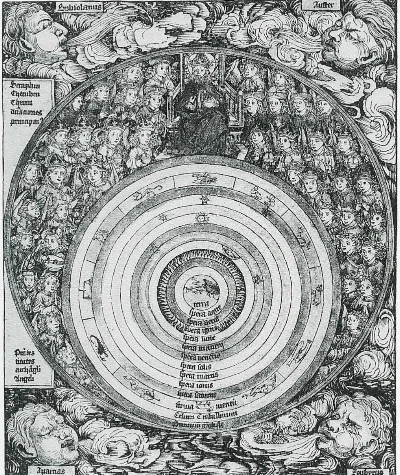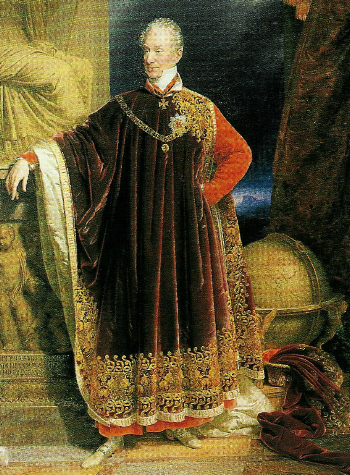In the Beginning
Globes are among the most ancient scientific instruments known. Their history extends more than a thousand years and still today globes are being produced in large numbers.
Celestial models were used as navigational tools by travelers long before the terrestrial globe emerged.
Over 2,000 years ago, the Greek culture learned that the world is round. Aristotle proved this by noticing the round shadow of the Earth onto the moon during an eclipse. The first known globe, a revolving sphere, was made by Crates of Mallus c. 2nd Century B.C.
A highly important contribution to the development of the globe was made in the second century A.D. by the Alexandrian astronomer and geographer Claudius Ptolemaeus (or Ptolemy).He described a precise scientific method of fixing the position of a place on a globe by using so-called spherical coordinates (i.e. the longitude and latitude of a place on earth or the (ecliptic) longitude and latitude for a place in the sky). Such coordinate systems are the foundation on which all later scientific globes rest. Because of his findings and descriptions, Ptolemy is considered the father of geography.
The knowledge of the round world was taught until the fall of the Greek and Roman Empires c. 4th Century A.D. and then lost as society slipped into the dark ages.
From then, well into the 1300’s, society believed the world was a flat disc with the river “ocean” surrounding it. As the opinion slowly changed for the earth to be round again, it surely was the center of the universe with planets and the sun revolving around it.
The first to differ was Copernicus, though his theory was dismissed. About 90 years later Galileo, based on his experiments and findings, declared that in fact, the earth revolved around the sun. This did not sit well with the ruling church. Under threat of torture by inquisition, Galileo had to publicly re-canter.
Shortly after Galileo’s death, Newton was the first to prove mathematically that indeed, the sun is at the center of the universe and not earth.
And so, the teachings of Ptolemy had been revived and, once again, followed upon.
The oldest known western terrestrial globe still in existence today (located in the Germanic Museum in Nuremberg, Germany) was made in 1492 by Martin Behaim of Nuremberg. However, it revealed a blank gap in the earth’s land surface.
The age of discovery
The same year, Christopher Columbus, setting out west from Spain, landed in a region he thought was the East Indies. But another explorer named Amerigo Vespucci realized it was land in the `gap’ on Behaim’s globe. The vast continent of North and South America had, until 1492, been unknown to the people of Europe and Asia.
The new continent was named America by Martin Waldseemueller, a man of the cloth, map and globe maker by trade. He included Vespucci’s discovery on his globe gores in 1507, and named the new continent after him.
Another blank spot in the map of the world had vanished.
This was the period of great discoveries and it produced a tremendous upsurge of interest in geography, which went hand-in-hand with globe production. Terrestrial globes and world-maps, accompanied by detailed descriptions were the means of making the new discoveries known.
Those most interested in information concerning the new discoveries were statesmen and diplomats, who needed to know of shifts in balance of power with the conquering of new land; the clergy, who sought new regions for propagating the gospel; and merchants who calculated on extending their commerce.
Explorers were sent by emperors, kings and queens to find and conquer new land in the name of their empire, so colonies could be established. Upon their return, explorers would tell their tales and provide globe makers with their ship logs and diaries on newly discovered land.
Slowly more and more blank spots vanished from the globe. By the end of the 18th century, the outlines of continents on a globe looked similar to our earth today. Of course, there were variants, based on influence by political power or personal thoughts or beliefs…
The status symbol
At the time, most globe makers were mostly men of the cloth, as they also had been teachers, employed by lordships. One was Coronelli, whose globes, made for Louis XIV, were so remarkable, that he was showered with additional requests of globes. Vincent Coronelli was the first to be paid for his skill and knowledge as a globe maker. He requested and received a pension for his trade.
At this time the globe was a status symbol. A must-have for any emperor, bishop, lordship, or well established merchant. Many paintings of this era displayed these people of power with globes. Globes would be found in churches, as part of statues or buildings, as part of attire or in form of an “Erdapfel” in ceremonies. It was not an item the common man could acquire.
Meanwhile the manufacturing of globes began to advance along with new print techniques. Hand-painted globes, often made of wood, covered with textile started to give way to printed paper gore covered spheres. First printed with the wood carving method and then followed by copper plate prints…this was a more detailed and finer technique.
Progression & Advancement
The German South, especially Nuremberg was the center of globe manufacturing, starting in the 16th century. Amsterdam had its primary globe period in the 17th century as well as Venice, Paris and Rome. London entered the globe industry around the second half of the 18th century.
James Wilson was the first to produce globes in the U.S. in 1810. Chicago was the capitol of the U.S. globe makers in the early 20th century.
The globe became more available to the middle class. During the 18th and 19th centuries, it was fashionable for “a man of world” to carry a pocket globe, a small 2-3 inch globe along with his pocket watch.
Globes became commonplace as an educational apparatus in schools. Other oddities appeared, such as the first “blow-up” globe (Brett’s) as well as tin toy models.
During the 16th century, globes remained the prerogative of educational elite; by the 19th century, they had become a familiar object in schools and private homes.
Advancements in print knowledge introduced lithography to globe makers at the beginning of the 19th century. Now, able to print in color, it was no longer needed to add color to each globe by hand. Globes were mass produced at reasonable pricing. The sphere was made of fiberboard, covered by plaster to ensure smoothness and covered with individual paper gores, available in many sizes and mountings. It became fashionable décor to have a globe in your home. The first tin toy models appeared as well.
The globe, once a status symbol for the elite, has now gone mainstream.
Epilogue
The blank spots have vanished as we have conquered our world; we have indeed become a global village.
Yet no GPS system or Google Earth will ever be able to replace the feeling acquired when holding the world in your hands. Vintage World globes are time-capsules of the moment in their time. Their maps share with us the newest discoveries of the time, the never-ending quest for man to seek, expand and conquer.
The mounting of a globe shows off the style and fashion of society of that era. Terrestrial globes display birth and death of nations and entire empires. They show the human race at peace and at war. The visible history of antique globes can help us understand the roots of many political conflicts of today …if we take the time to listen.
Immensum In Parvo – The Immeasurable Though Small (the world in your hands)








